Mary Tonkin – Artist Feature
In News July 1, 2020

Image above: Ramble, Kalorama (detail) 2017-19 oil on linen 180 x 1890 cm
Mary Tonkin has a unique ability of capturing the essence of the bushland that surrounds her. To stand before one of Tonkin’s majestic, large scale paintings is to be immersed in the gum thicketed forest; at once captivated by the grandeur of huge, ancient tree trunks and drawn in to the sensitive, lyrical gestures of delicate leaves and grasses. In this following Q&A Mary shares with us insight into her daily routine, her inspirations and her approach to painting.
How has life in lockdown been for you?
I’m finding a kind of slightly frustrated joy in these days with my treasures who bunk off home schooling in the afternoons and enjoy the bush with me. There are (as ever) never enough painting hours but it is a precious time of quiet togetherness.
Do you have a favourite species of tree/plant?
We’re very fortunate to live amongst Mountain Ash, Eucalyptus regnans – the tallest flowering trees in the world. They are glorious witnesses to our lives. We’ve planted a Cercis canadensis ‘Forest Pansy’ and Acer pentaphyllum outside our front door which give me great pleasure every day, but my favourite genera are Podophyllum and Galanthus, or perhaps Arisaema and Trillium (slight plant nerd).

What are your current artistic inspirations?
I have been thinking so much about these two paintings: Matisse’s French Window at Collioure (c. 1914). This work was most likely made in the summer of 1914 as war broke out across Europe. It was not exhibited in Matisse’s lifetime. Also, Monet’s Water Lilies (1914-26). Monet returned to his waterlilies in 1914.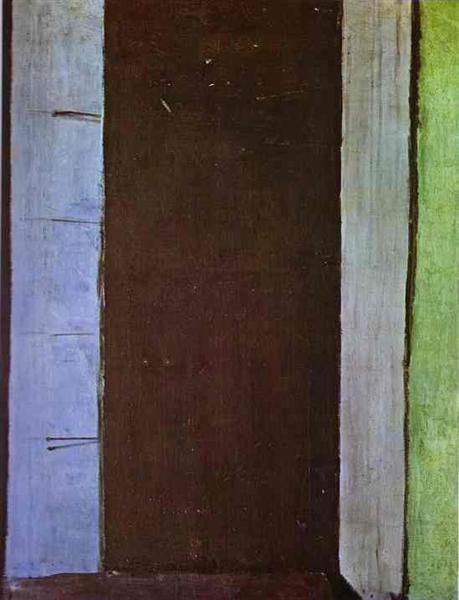
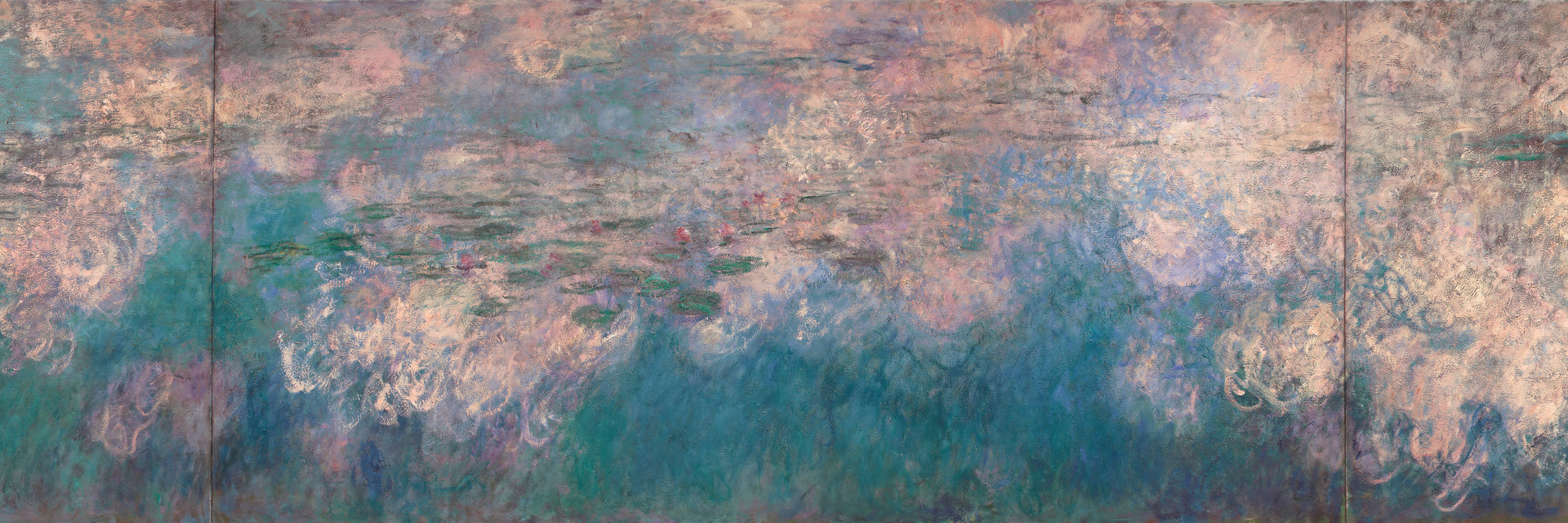
What is your earliest painting memory and when did you first realise it was something you wanted to pursue?
As a very little child we had a jigsaw of the Van Gogh painting, Bedroom in Arles and I was captivated by the presence of the forms, the love that emanated from it. When I was ten, following the Ash Wednesday fires, I made little before and after paintings of the bush. It was perhaps the first indication that I would need painting to make sense of life. When we used oil paint in high school I almost immediately felt that I knew what to do with it – that I’d used it before. It wasn’t exactly a light bulb moment as I didn’t have a clear idea of what being a painter meant, but it was a profound sensual response to the medium that drew me to pursue its possibilities.



 A few details of current work – paintings of longing and deep peace.
A few details of current work – paintings of longing and deep peace.
Your homemade sourdough bread is a hit amongst the AG team. What is your favourite thing to cook or bake?
I do love making bread, especially when it is gobbled so happily! I also love making Lemon Tart but I have to limit that a little as I do need to keep trying it, just to be sure it is good, then just to check, again, and perhaps again, just to be sure.
 Snap, Kalorama 2019 oil on linen 64 x 64 cm. Available at Australian Galleries, Melbourne
Snap, Kalorama 2019 oil on linen 64 x 64 cm. Available at Australian Galleries, Melbourne
Can you share with us a typical day? Do you have any hobbies?
On a typical weekday I’m in the bush painting – precious hours sandwiched between school drop off and pick up, book-ended by haphazard domestic duties. The weekends are lavished on the garden, family, friends and food gathering. I adore having my hands in the soil and building a garden, it nourishes me and is as important to me as my work, an uncomplicated source of delight.
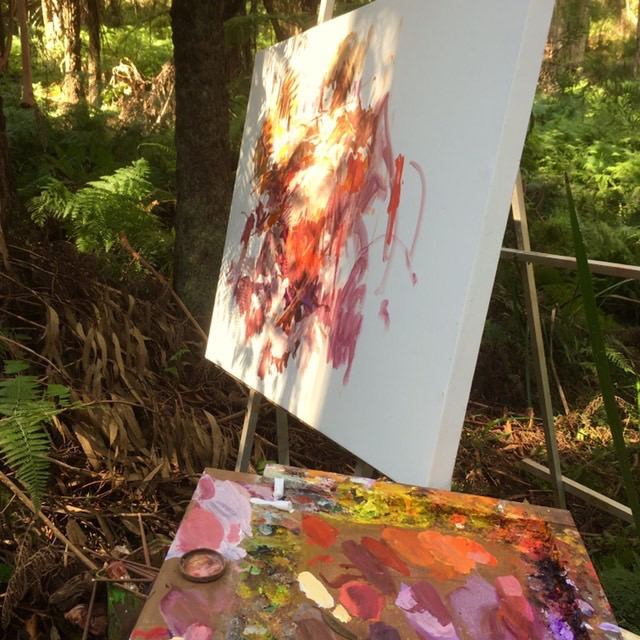
Do you work on paintings one at a time or do you have multiple works in progress? What approach works best for you and why?
I tend to work on one painting at a time, working across the days and in varying light. Over time the painting starts to dictate what it needs and what light it needs. (More rarely I might make quick works that deal with a particular light at a particular time.)
I want each image to have its own logic and meaning – those are often subconscious or instinctive things that emerge during the process of painting, they need their own space and time. Essentially I’m pretty obsessive and like to wrestle with something until it comes together or defeats me. That being said, I have several paintings in the studio that I’ve left off and need to return to – things that need ditching or revisiting.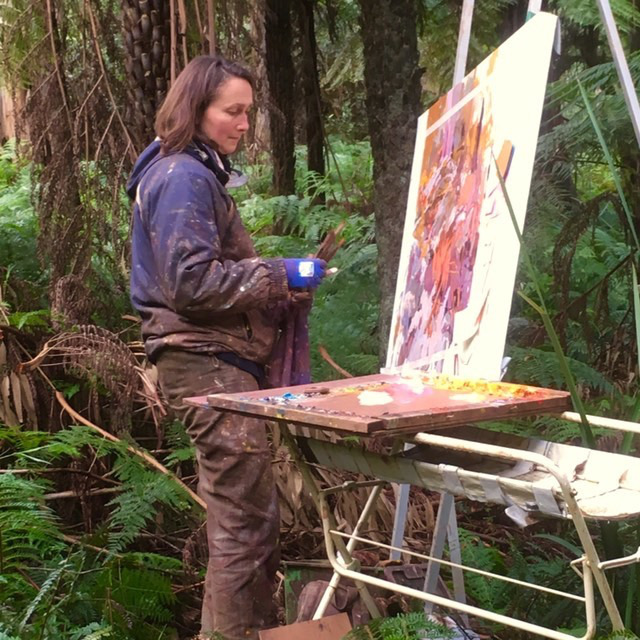
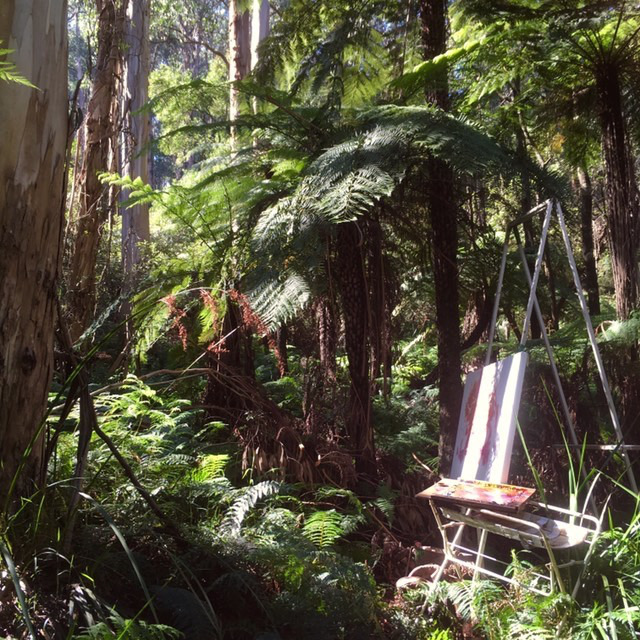
Your recent post to Instagram of a new painting in a green palette sparked a lot of comments. In your interview with Richard Morecroft he mentioned your varying and evolving colour palette which you explained is often instinctive. How do you respond to such an overwhelming response to this new painting?
Richard Morecroft seemed to think that my paintings have a recognisable palette. I don’t see that, but I suspect it is like not hearing the intonation in one’s accent. The colours I use come out of a response to being present in a particular place at a particular time. I’m trying to use the language of colour to convey the sensations that arise, the whole sensual envelope of what it is to be present to those forms. I don’t often use local or naturalistic colour as I find it difficult to convey my experience of the forms in space, let alone everything else with such limited means. I suspect that the positive response to that image has more to do with an overwhelming tendency in our culture to read images very literally: it is green and must therefore be true to what I’m seeing. We’re so used to equating the surface skin of things with the things themselves that we forget they have an internal life of their own, that poetic meaning might be made by our subjective, somatic experience of them. For me, some recent greener paintings have come out of a need to make quiet, grounded images with cool air and sparkling light amid the chaos.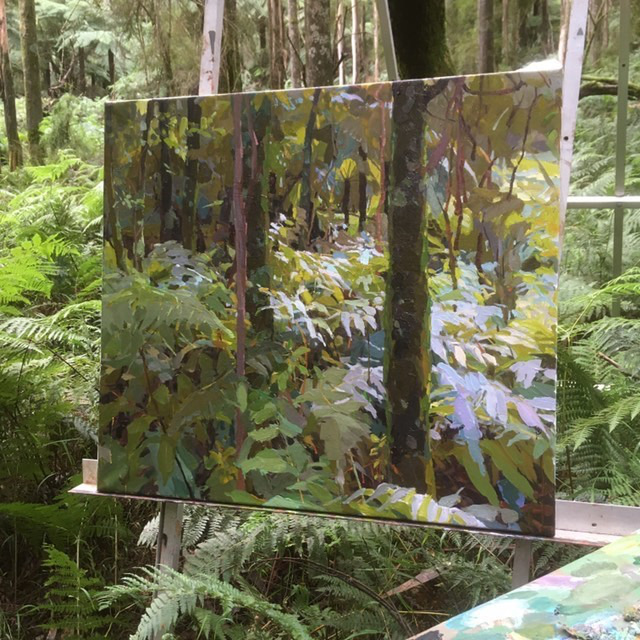
Interview with Richard Morecroft
To view this latest video interview with Mary Tonkin by Richard Morecroft on her recent exhibition Ramble at Whitehorse Artspace, click here.
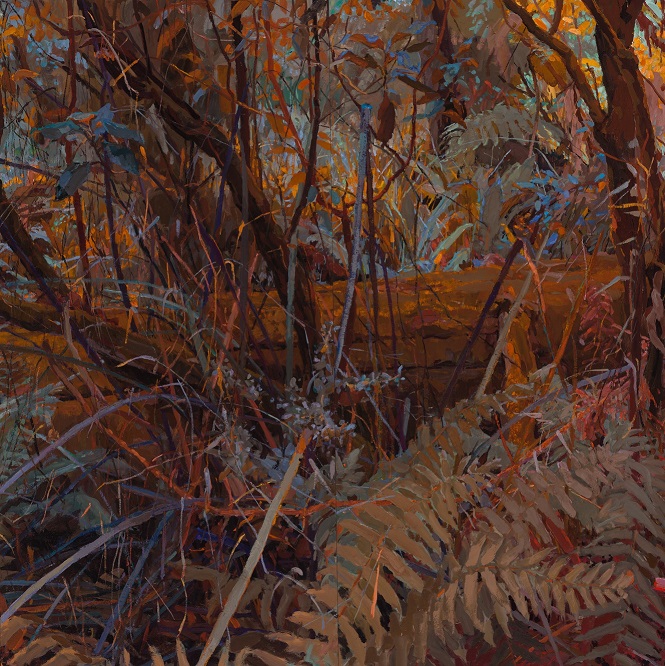
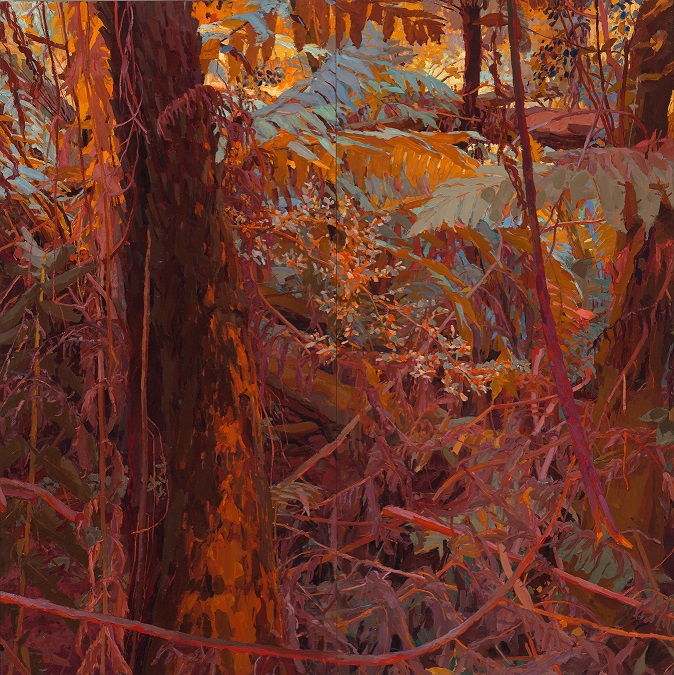 Images above: Ramble, Kalorama (details) 2017-19 oil on linen 180 x 1890 cm
Images above: Ramble, Kalorama (details) 2017-19 oil on linen 180 x 1890 cm
‘Ramble, Kalorama’ Artist Statement
‘Ramble, Kalorama 2017-19 is the culmination of more than ten years of drawing and painting around the problem of how to make a work that conveys the immersive and somewhat episodic experience of being in the bush. Even if I’m standing in one spot to draw or paint I move about, my point of view, relationship to forms, light and seasons all change. The previously seen impinges on the present and all the internal stuff I bring to it is in flux. I ramble about and try to make sense of it all, in a kind of ecstatic reverie.
This work of 21 panels, each 180 x 90 cm, was all painted en plein air in an area of about 8 x 10 sq m, much of it a kind of log corral of long fallen trees. It is just a little way into the bush from a spring-fed dam on my family’s rare bulb farm; where I grew up and where I have my studio. This painting is not a continuous panorama, but rather it loops through the space, doubling back and repeating forms, overlapping various points of view, ending with what is in reality the entry to this little haven, a kind of somersault of tree ferns.
I love this bush. I love its particular chaos and mouldering smell, I love its intimacy – how it envelops and embraces, and its grandeur – the sense of a tree time-scale and natural rhythms beyond human ken. I love that sometimes it sparkles and dances, at other times is quiet and almost withdrawn. I’m not sure where or what I’d be without its sustaining presence. We all need these natural wellsprings.’ – Mary Tonkin, 2019
 Ramble, Kalorama 2017-19 oil on linen 180 x 1890 cm
Ramble, Kalorama 2017-19 oil on linen 180 x 1890 cm
‘Ramble, Kalorama’ at Burrinja Gallery
We are pleased to announce that Ramble, Kalorama will be exhibited at Burrinja Cultural Centre in Upwey, Victoria, from 4 August – 27 September 2020 in conjunction with Rona Green.
